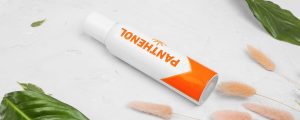Have you ever wondered if there is a better way to cleanse your skin than using harsh soaps or detergents? If so, you may want to try oil cleansing. It is a method of using plant oils to remove dirt, makeup, and excess sebum from your pores while nourishing and balancing your skin. Oil cleansing can benefit different skin types and conditions, including oily skin, dry skin, acne-prone skin, sensitive skin, and aging skin. This article explains how to go for the best cleansing for oily skin.
Choosing an Oil
The first step of oil cleansing is to choose a deep cleansing oil that suits your skin type, sensitivity, and preference. There are many oils that you can use for oil cleansing, such as olive oil, castor oil, jojoba oil, argan oil, coconut oil, almond oil, grapeseed oil, and more. Each oil has its own properties and benefits for the skin.
For example, olive oil is rich in antioxidants and moisturizing for dry skin; castor oil is antibacterial and cleansing for oily skin; jojoba oil is similar to the natural sebum of the skin and regulates its production; argan oil is anti-aging and improves elasticity.
You can use a single oil or a blend of oils for oil cleansing. A general rule of thumb is to use more castor oil for oily skin, more olive oil for dry skin, and equal parts of both for normal or combination skin. You can also add a few drops of essential oils for extra benefits or fragrance, such as tea tree oil for acne, lavender oil for soothing, or rose oil for brightening.
How to Oil Cleanse
The basic steps of oil cleansing are simple and easy to follow. Here is how to do it:
- Apply 1 to 2 teaspoons of cleansing oil to your dry face and massage gently for a few minutes. This will help dissolve the dirt, makeup, and sebum from your pores and stimulate blood circulation.
- Wet a washcloth with warm water and place it over your face until it cools down. This will help open up your pores and remove the oil more easily.
- Wipe off the cleansing oil gently with the washcloth and rinse your face with water. You can also use a gentle water-based cleanser or toner afterward if you feel like you need more cleansing.
- Pat your face dry with a towel and apply your usual moisturizer or serum.
You can do oil cleansing once or twice a day, depending on your skin’s needs. Some tips to make it more effective are:
- Use clean washcloths and change them frequently
- Avoid rubbing or scrubbing your skin too hard
- Experiment with different oils and ratios until you find what works best for you
What to Expect
After oil cleansing, you may notice some changes in your skin, such as:
- Improved hydration and elasticity
- Reduced inflammation and redness
- Fewer breakouts and clogged pores
- Smoother and softer texture
These changes may not happen overnight, but with consistent use of oil cleansing, you will see positive results over time. However, some people may experience some initial purging or breakouts when they start oil cleansing. This is normal and temporary as your skin adjusts to the new method and releases the impurities from your pores. It should subside within a few weeks.
Conclusion
Oil cleansing is a gentle and natural way to cleanse your skin without stripping it of its moisture or beneficial bacteria. It can help improve various skin types and conditions by removing impurities, balancing sebum production, and nourishing the skin. To do oil cleansing properly, you need to choose the best cleansing oil for your skin, follow the basic steps of oil cleansing, and be patient with the results.













